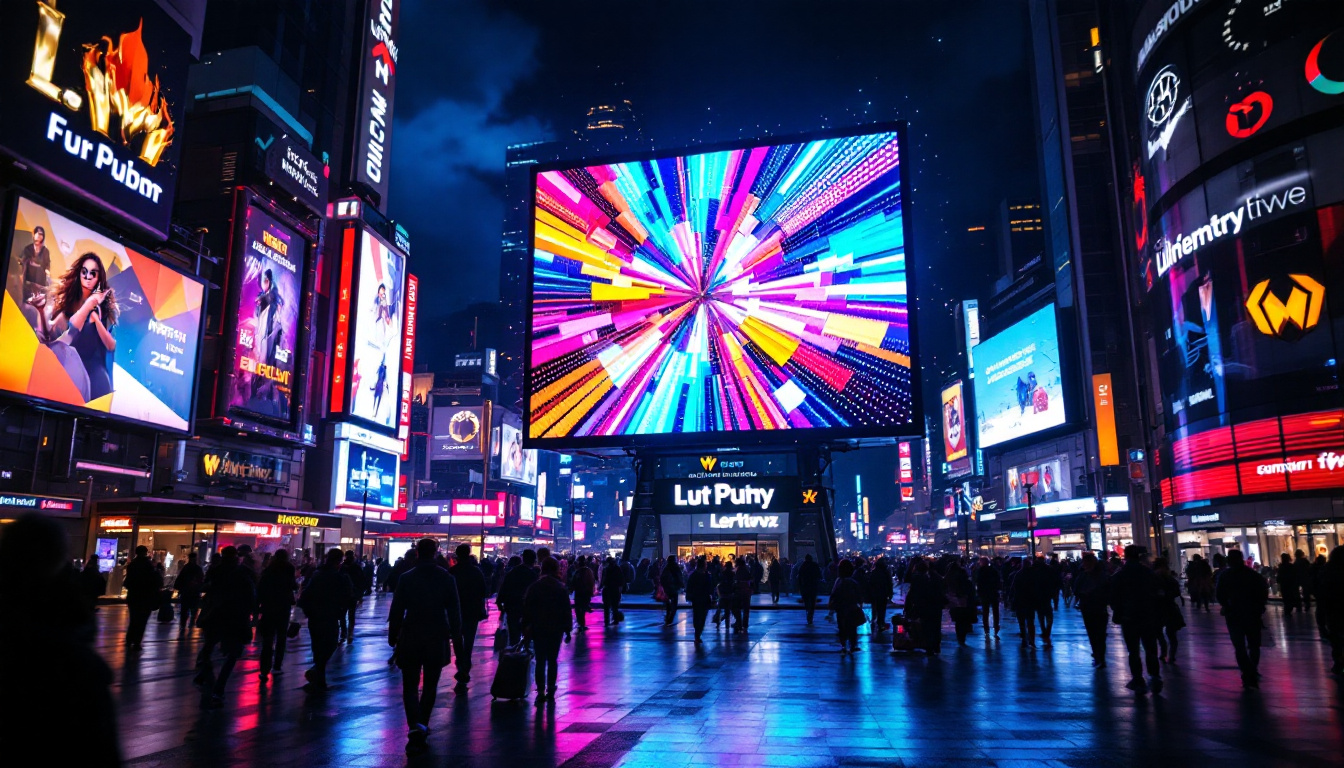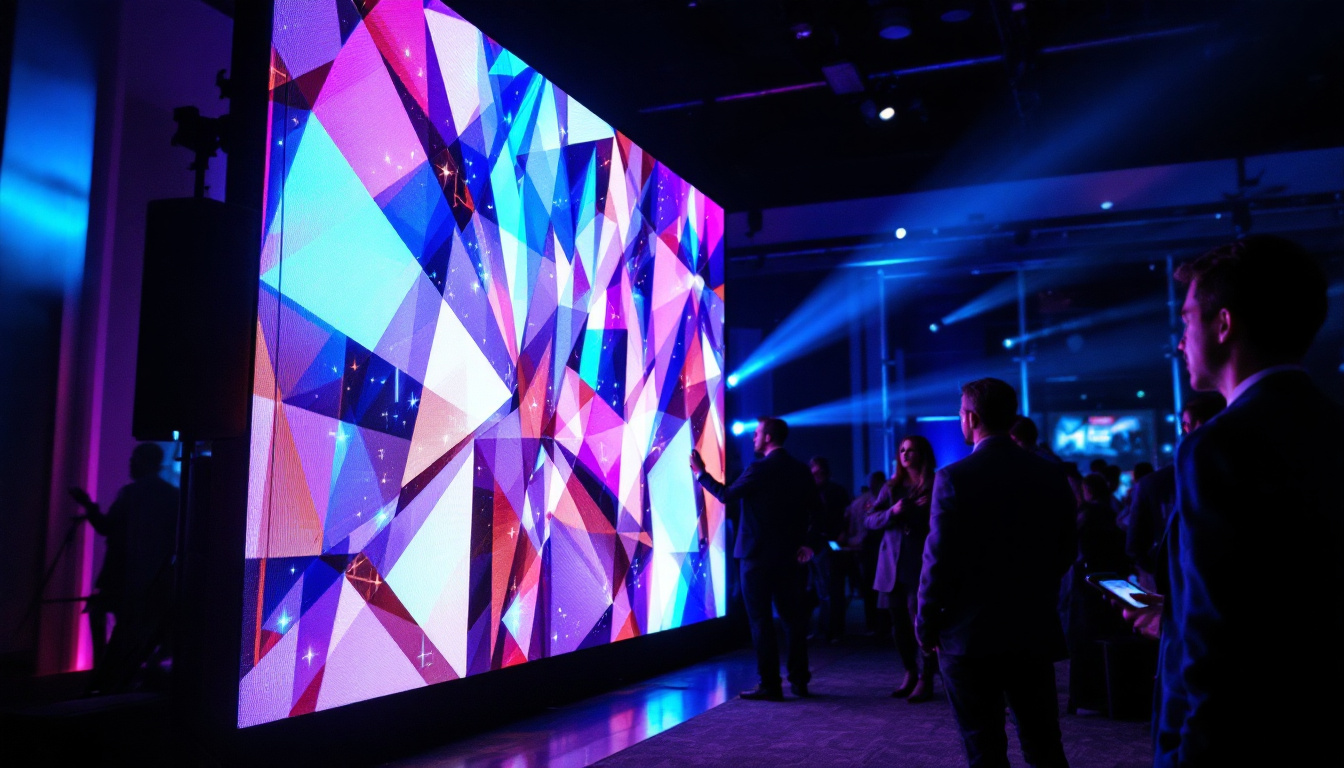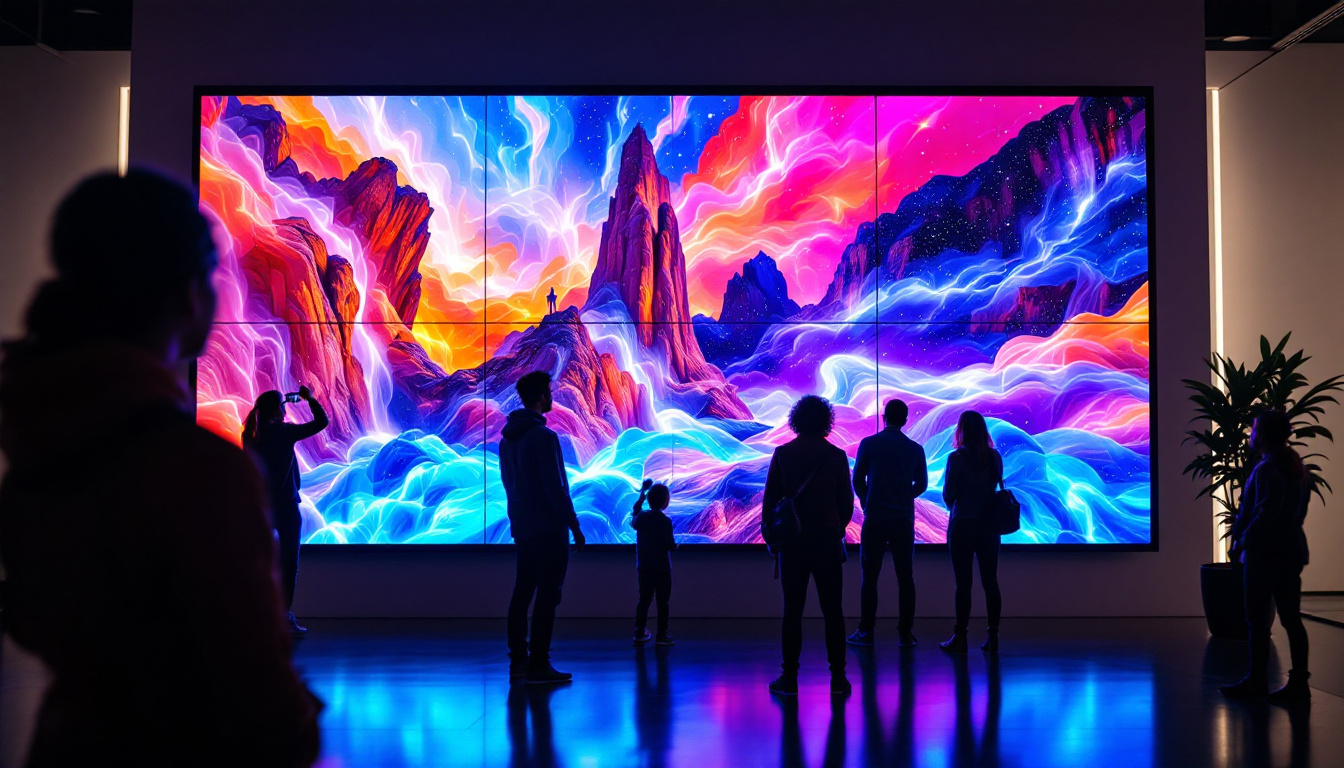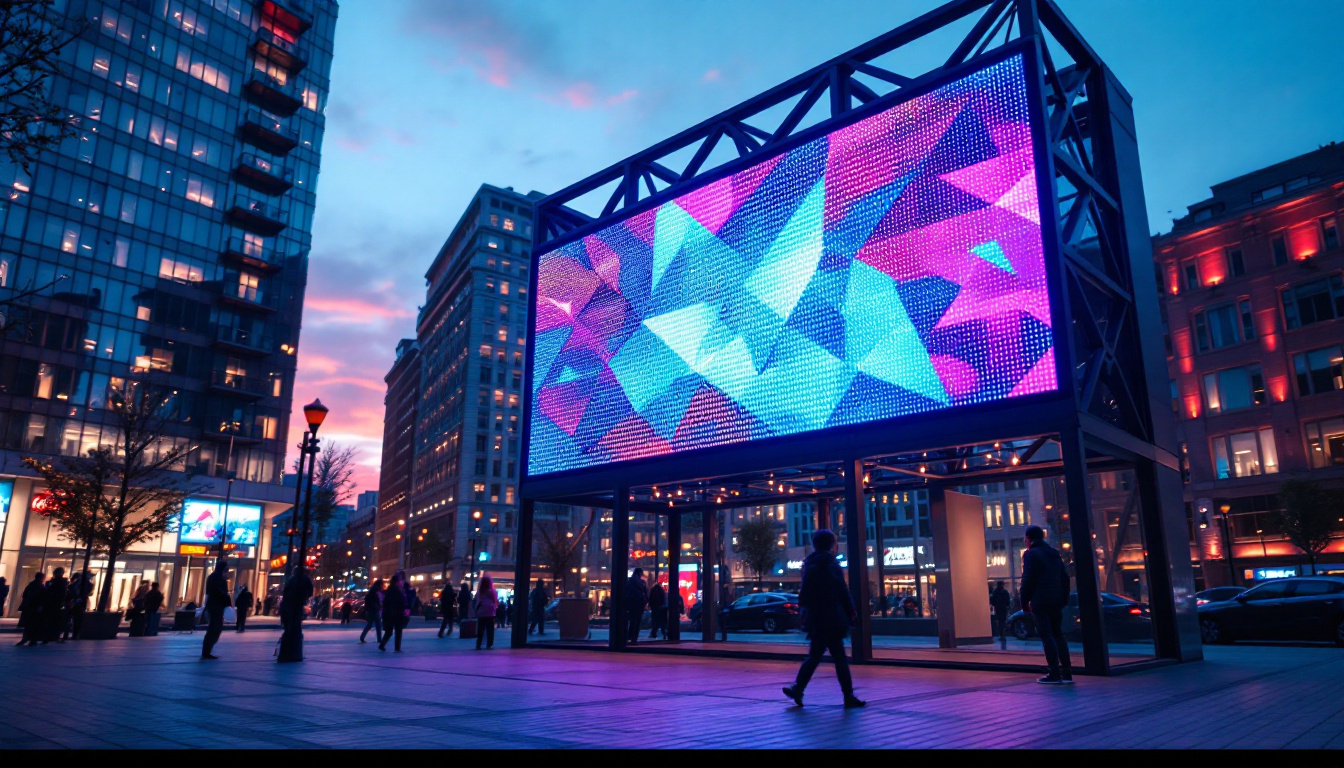Digital Signage Display Vs TV: LED Display Explained
In today’s fast-paced world, visual communication has become more critical than ever. Businesses, educational institutions, and public spaces are increasingly turning to digital signage displays to convey messages effectively. But how do these displays compare to traditional TVs? This article delves into the nuances of digital signage displays and TVs, particularly focusing on LED technology, to help you make informed decisions for your visual communication needs.
Understanding Digital Signage Displays
Digital signage displays are specialized screens designed to showcase dynamic content, such as advertisements, information, and multimedia presentations. Unlike traditional televisions, which are primarily used for entertainment, digital signage serves a more functional purpose in various environments. These displays can be found in places ranging from bustling shopping malls to quiet corporate offices, adapting seamlessly to the needs of each setting.
Key Features of Digital Signage Displays
One of the standout features of digital signage displays is their ability to operate continuously. These screens are built to run 24/7, making them ideal for high-traffic areas where constant communication is essential. Additionally, they often come equipped with advanced software that allows for easy content management, enabling users to update and schedule content remotely. This capability not only saves time but also ensures that the information displayed is always current and relevant, enhancing audience engagement.
Another critical aspect of digital signage is the variety of sizes and resolutions available. From small kiosks to large video walls, digital signage can be tailored to fit any space. High-definition and 4K options ensure that the displayed content is sharp and engaging, capturing the attention of passersby. Furthermore, many digital signage displays are designed with brightness and contrast enhancements, making them effective even in brightly lit environments, such as outdoor settings or well-lit retail spaces.
Applications in Various Industries
Digital signage displays are versatile tools that find applications across multiple sectors. In retail, they are used to promote products, offer discounts, and enhance the shopping experience. Educational institutions utilize them to share announcements, display schedules, and facilitate interactive learning. The integration of touch-screen technology in educational settings allows students to engage with the content actively, fostering a more dynamic learning environment.
Moreover, in corporate environments, digital signage can enhance internal communication by displaying important updates and employee recognition. Public spaces, such as airports and train stations, leverage digital signage for wayfinding and real-time information dissemination, ensuring that travelers are well-informed. In healthcare facilities, digital signage plays a crucial role in patient communication, providing information about wait times, directions to departments, and health tips, which can significantly improve the patient experience and operational efficiency.
The Role of TVs in Visual Communication
Televisions have long been a staple in homes and businesses for entertainment purposes. However, their role in visual communication is evolving, especially with the advent of smart TVs that offer connectivity and interactive features. As technology advances, the integration of televisions into various communication strategies is becoming increasingly prevalent, allowing for more engaging and dynamic presentations that can capture the attention of audiences in ways traditional media cannot.
Smart Features and Connectivity
Modern TVs come equipped with smart features that allow users to connect to the internet, stream content, and even display presentations from various devices. This connectivity can be advantageous for businesses looking to showcase promotional videos or presentations without the need for additional hardware. Furthermore, many smart TVs support applications that facilitate real-time updates and social media integration, enabling businesses to engage with their audience more interactively. For example, a restaurant can display live feeds of customer reviews or social media posts, creating a vibrant atmosphere that encourages customer interaction and feedback.
However, while TVs offer flexibility in content delivery, they are not designed for continuous operation. Most consumer-grade televisions are built for average daily use, typically around 8-10 hours. This limitation can be a significant drawback in environments where constant display is required. In contrast, commercial displays are engineered for extended use, often featuring enhanced cooling systems and higher durability to withstand the rigors of continuous operation. Businesses that rely heavily on visual communication may find that investing in commercial-grade displays provides a more reliable and effective solution.
Limitations of Traditional TVs
While TVs can serve as a temporary solution for displaying information, they lack the robust features of digital signage displays. For instance, TVs generally do not support advanced content management systems, making it challenging to update content dynamically. Additionally, the resolution and brightness levels of consumer TVs may not meet the standards needed for high-visibility environments. In settings such as retail stores or trade shows, where lighting conditions can vary significantly, the inability of traditional TVs to adjust brightness and contrast can result in poor visibility of displayed content, ultimately diminishing the effectiveness of the visual communication strategy.
Moreover, the aspect ratio and screen size of consumer TVs may not be optimized for all types of content. Businesses often require specific dimensions to effectively showcase their branding or promotional material, and traditional TVs may not provide the flexibility needed for such tailored presentations. This limitation can lead to awkward cropping of images or text, which detracts from the overall aesthetic and professional appearance of the displayed content. As a result, organizations aiming for impactful visual communication may need to explore alternative solutions that offer greater customization and adaptability to meet their specific needs.
LED Technology: A Common Ground
Both digital signage displays and TVs often utilize LED technology, which has become the standard for high-quality visual presentations. Understanding the differences in how this technology is applied can help clarify the distinctions between the two types of displays.
Brightness and Visibility
LED displays are renowned for their brightness, which is crucial in environments with high ambient light. Digital signage displays typically feature higher brightness levels, often exceeding 2,500 nits, making them suitable for outdoor use or brightly lit indoor spaces. In contrast, most consumer TVs have brightness levels around 300-500 nits, which may not be sufficient for all viewing conditions.
This difference in brightness directly impacts visibility. Digital signage displays can be seen clearly from a distance, ensuring that messages are communicated effectively, while TVs may struggle to deliver content in challenging lighting conditions.
Durability and Longevity
Another significant advantage of digital signage displays over traditional TVs lies in their durability. Digital signage screens are engineered for heavy usage, often featuring protective glass and weather-resistant designs for outdoor applications. This durability ensures that they can withstand the rigors of constant operation and environmental factors.
Conversely, consumer TVs are not built for the same level of wear and tear. Their components may not be designed for extended use, leading to potential overheating and reduced lifespan when used continuously.
Cost Considerations
When evaluating digital signage displays versus TVs, cost is a critical factor. While the initial investment for digital signage displays may be higher, it is essential to consider the long-term benefits and savings they can provide.
Initial Investment vs. Long-Term Value
Digital signage displays often come with a higher price tag due to their advanced features and robust construction. However, this investment can pay off in the long run. The ability to update content remotely, run 24/7, and withstand harsh conditions can lead to lower operational costs and increased return on investment (ROI).
On the other hand, while TVs may appear to be a more budget-friendly option initially, their limitations in functionality and durability can lead to additional costs over time. Frequent replacements, maintenance, and the need for additional equipment can add up, making them less economical in the long run.
Hidden Costs of TV Usage
Businesses considering TVs for digital signage should also be aware of hidden costs. These may include the need for external media players, content management software, and potential licensing fees for certain applications. In contrast, digital signage solutions often come with integrated software that simplifies content management and reduces the need for additional hardware.
Choosing the Right Solution for Your Needs
Deciding between digital signage displays and TVs ultimately depends on the specific needs of the business or organization. Understanding the unique requirements can help guide this decision-making process.
Assessing Your Environment
Consider the environment in which the display will be used. For high-traffic areas or outdoor settings, digital signage displays are generally the better choice due to their durability, brightness, and continuous operation capabilities. In contrast, TVs may suffice for low-traffic areas or temporary setups.
Additionally, think about the content you plan to display. If dynamic content that requires frequent updates is essential, digital signage displays offer the necessary tools for effective content management. For static content or occasional presentations, a TV may be adequate.
Future-Proofing Your Investment
Another essential factor to consider is future-proofing your investment. As technology continues to evolve, opting for a solution that can adapt to changing needs and advancements is vital. Digital signage displays are designed with scalability in mind, allowing for upgrades and expansions as required.
On the other hand, traditional TVs may not offer the same level of flexibility, potentially leading to additional costs if upgrades become necessary. Investing in digital signage can provide peace of mind, knowing that the system can grow alongside the business.
Conclusion
In conclusion, while both digital signage displays and TVs have their place in visual communication, they serve different purposes and come with distinct advantages and limitations. Digital signage displays are purpose-built for continuous operation, high visibility, and dynamic content management, making them ideal for businesses and organizations that prioritize effective communication.
Conversely, traditional TVs may offer a more affordable initial investment but can fall short in durability, functionality, and long-term value. Understanding the specific needs of your environment, content requirements, and future growth plans is crucial in making the right choice.
Ultimately, whether opting for a digital signage display or a traditional TV, the decision should align with the goals of the organization and the audience it aims to engage. Investing in the right technology can enhance communication, improve customer experiences, and drive business success.
Discover LumenMatrix’s Advanced LED Solutions
Ready to elevate your visual communication strategy with the latest in LED display technology? Look no further than LumenMatrix, where innovation meets excellence. Our diverse range of LED display solutions, from Indoor and Outdoor LED Walls to specialized displays for vehicles, sports, and even customizable options, is designed to captivate your audience and amplify your message. Embrace the future of digital signage with LumenMatrix and create unforgettable visual experiences. Check out LumenMatrix LED Display Solutions today and transform the way you connect with your audience.































